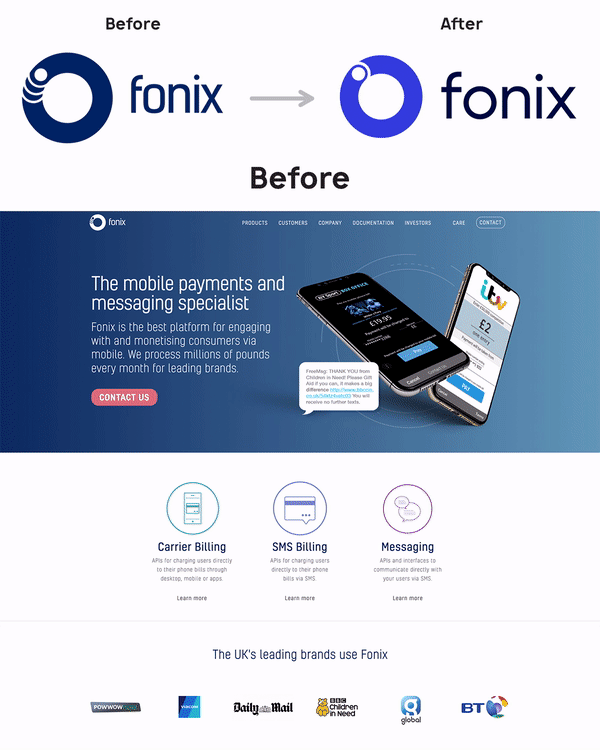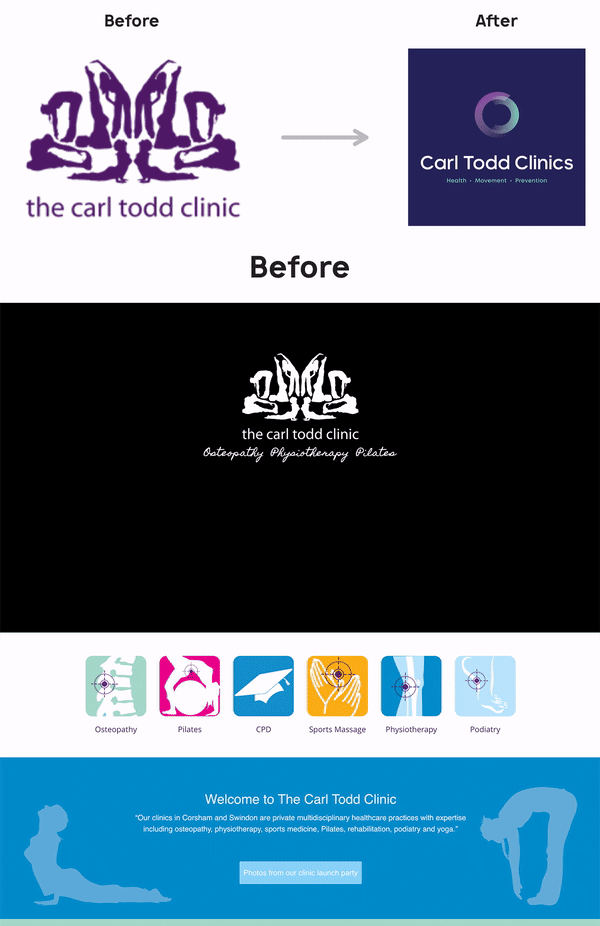To rebrand or not to rebrand, that is the question! And it’s a question that every company will face at some point. Giving your company a facelift is part of the brand cycle, and sometimes it’s hard to know when it’s time to implement the changes.
Before we dive into why and when you should rebrand, let’s explain what the term ‘rebranding’ actually means.
What is a Rebrand?
First of all, what’s a brand? Well, a brand references how a product or business is perceived by those who experience it (employees, customers, the media etc…) Elements that form a brand can be made up of three categories:
Visual identity: Logo, colour palette, visual elements, typefaces, photography
Marketing methods: Website, emails, social media presence, tagline, brand name
Verbal identity: Tone of voice
A rebrand then refers to the process of changing some or all of these elements in order to alter the way your company is perceived. It’s not just about changing a logo (although that can be part of it). It’s a shift in your brand direction, which is often represented through its visuals and brand identity. How consumers perceive your brand can affect the associations that they will make with it, and it will help them to determine whether you are a brand that they can trust to fulfil their needs.
The amount of changes you make will depend on lots of different factors and should be carefully considered. Changes too small may not be significant enough to make an impact, but changes that are too dramatic may cause major issues in the long run if your customers no longer recognise your brand as you. It is a decision that you shouldn’t take likely and should be backed with lots of research, which is why you can leave all that to us!
Below are some pretty famous examples of rebrands over the last few years, recognise any?
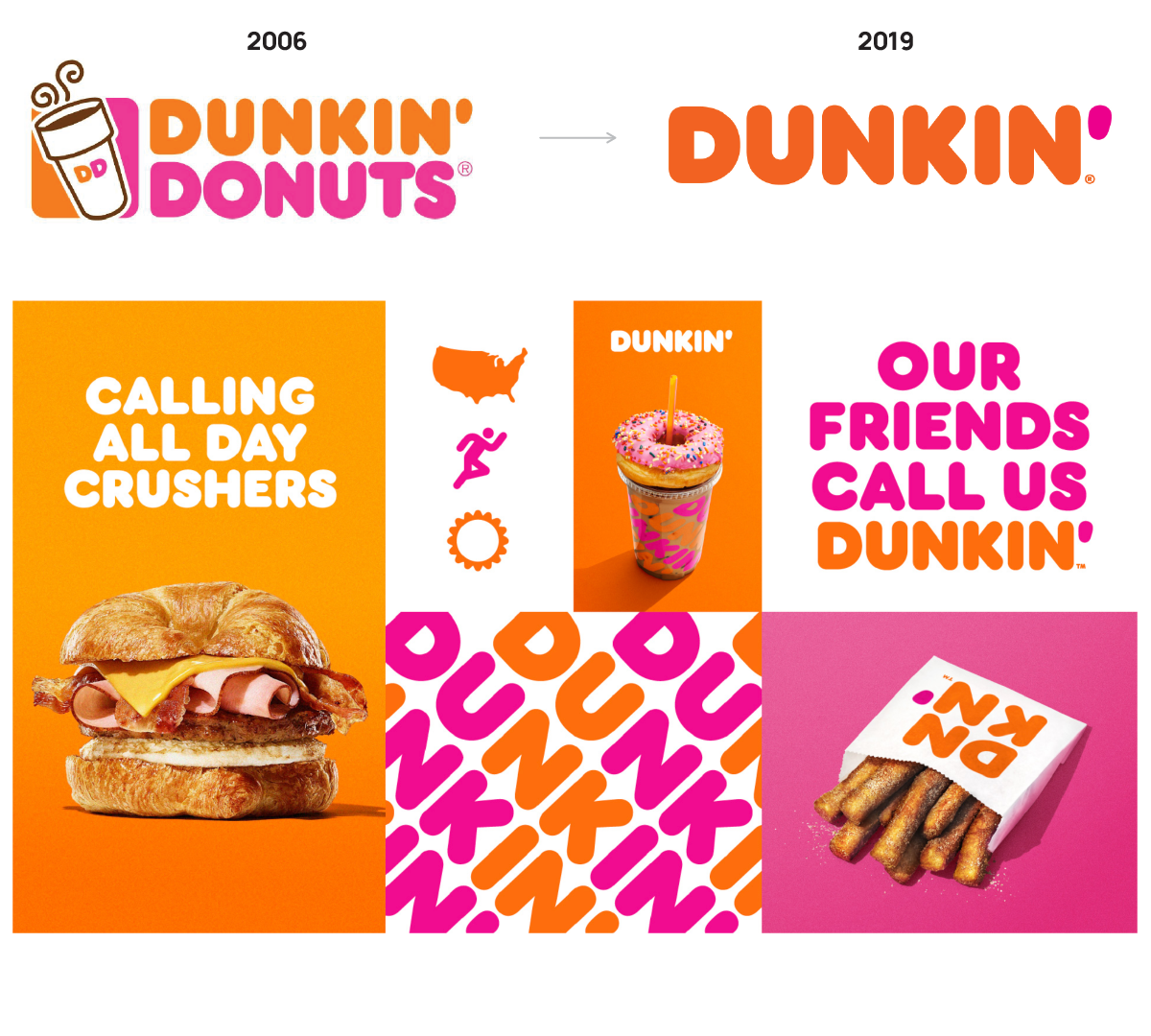
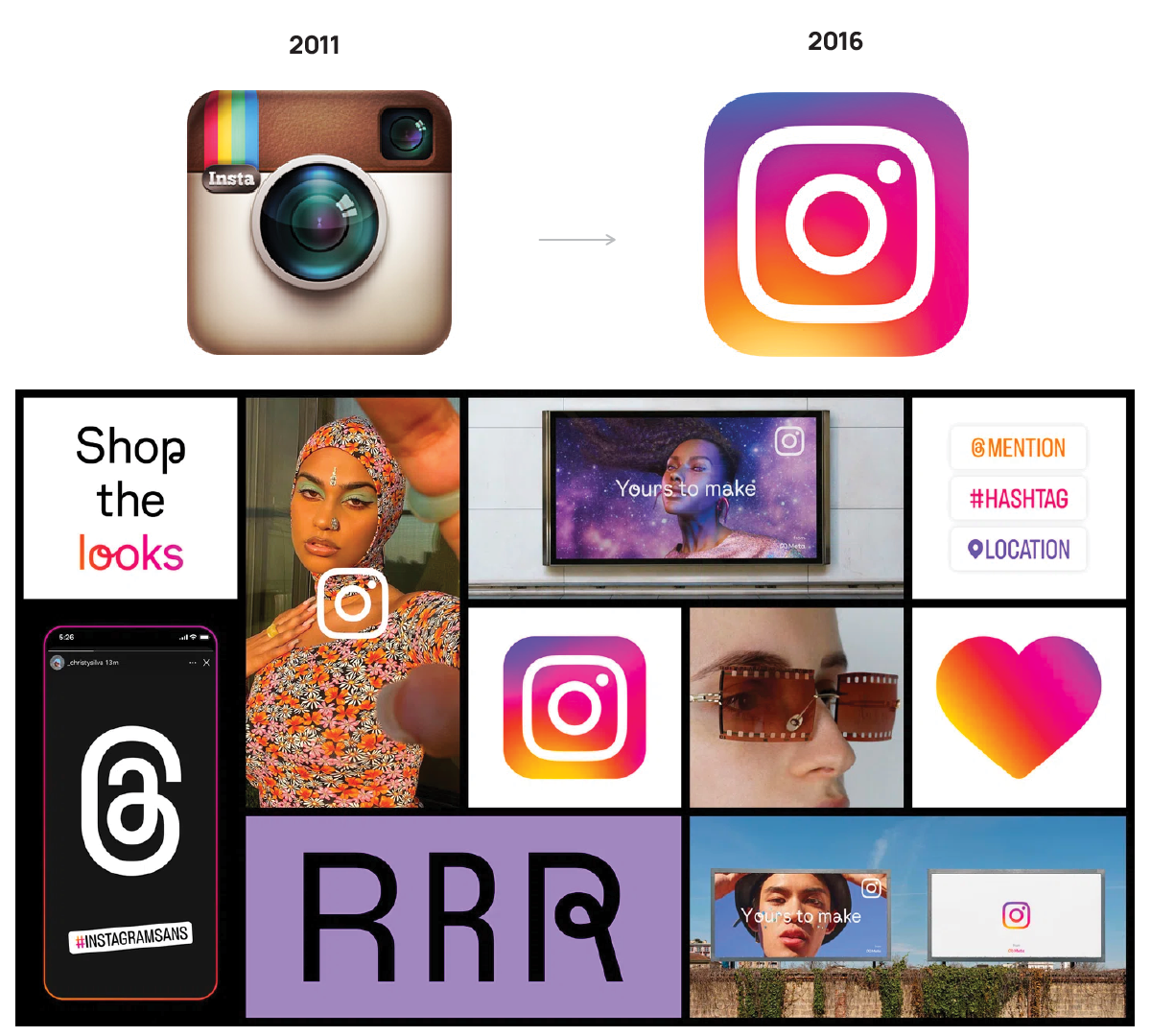
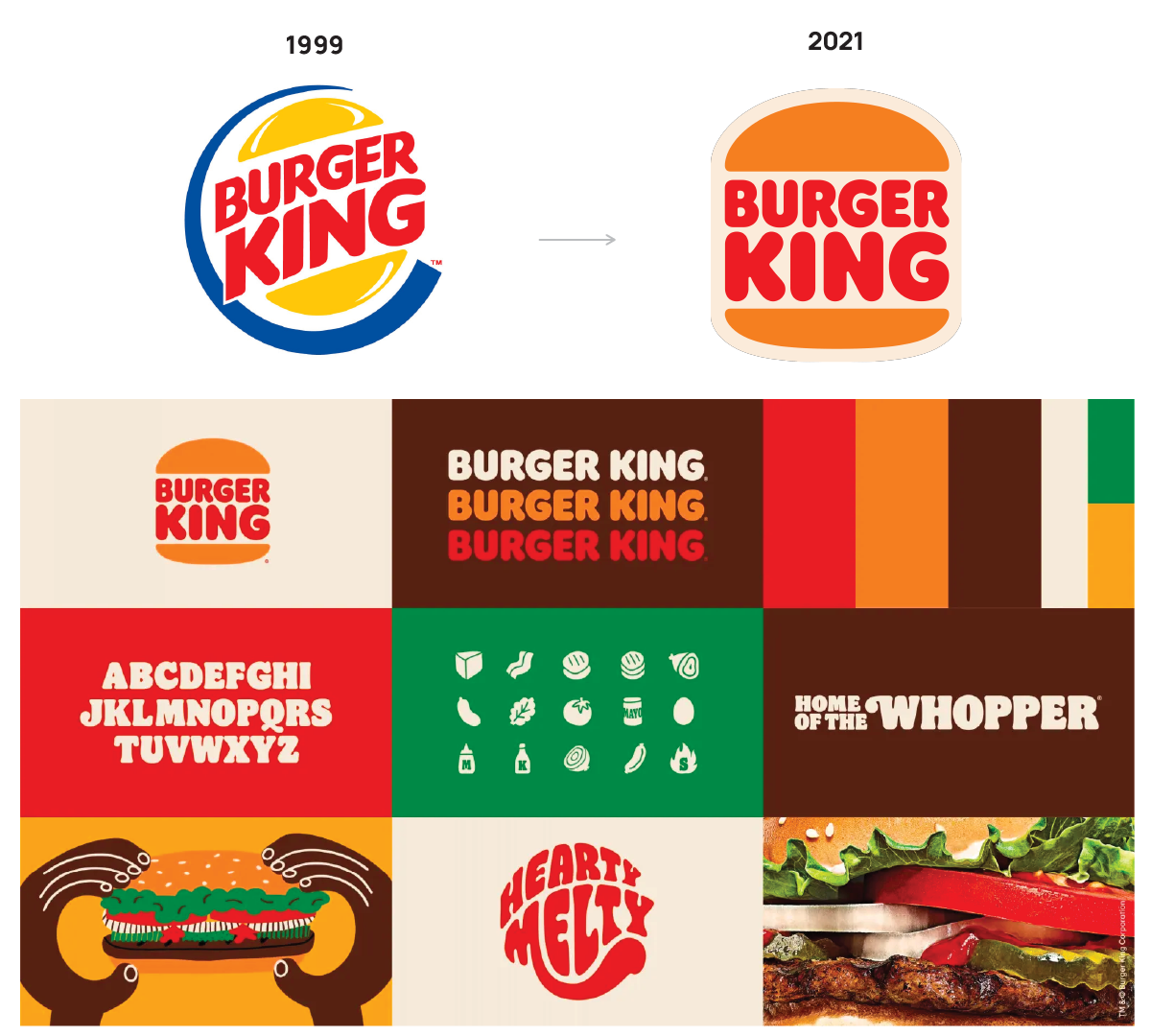
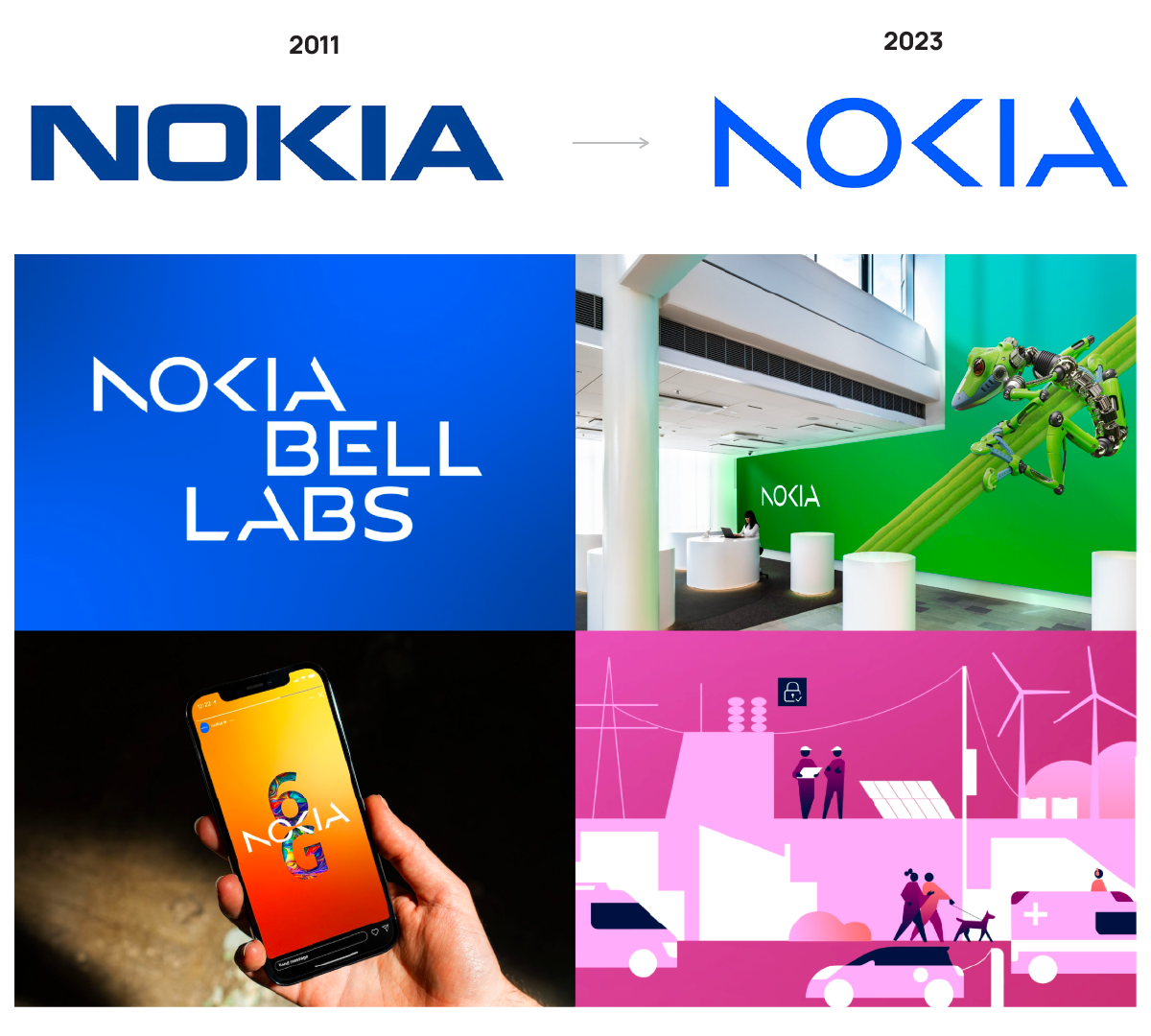
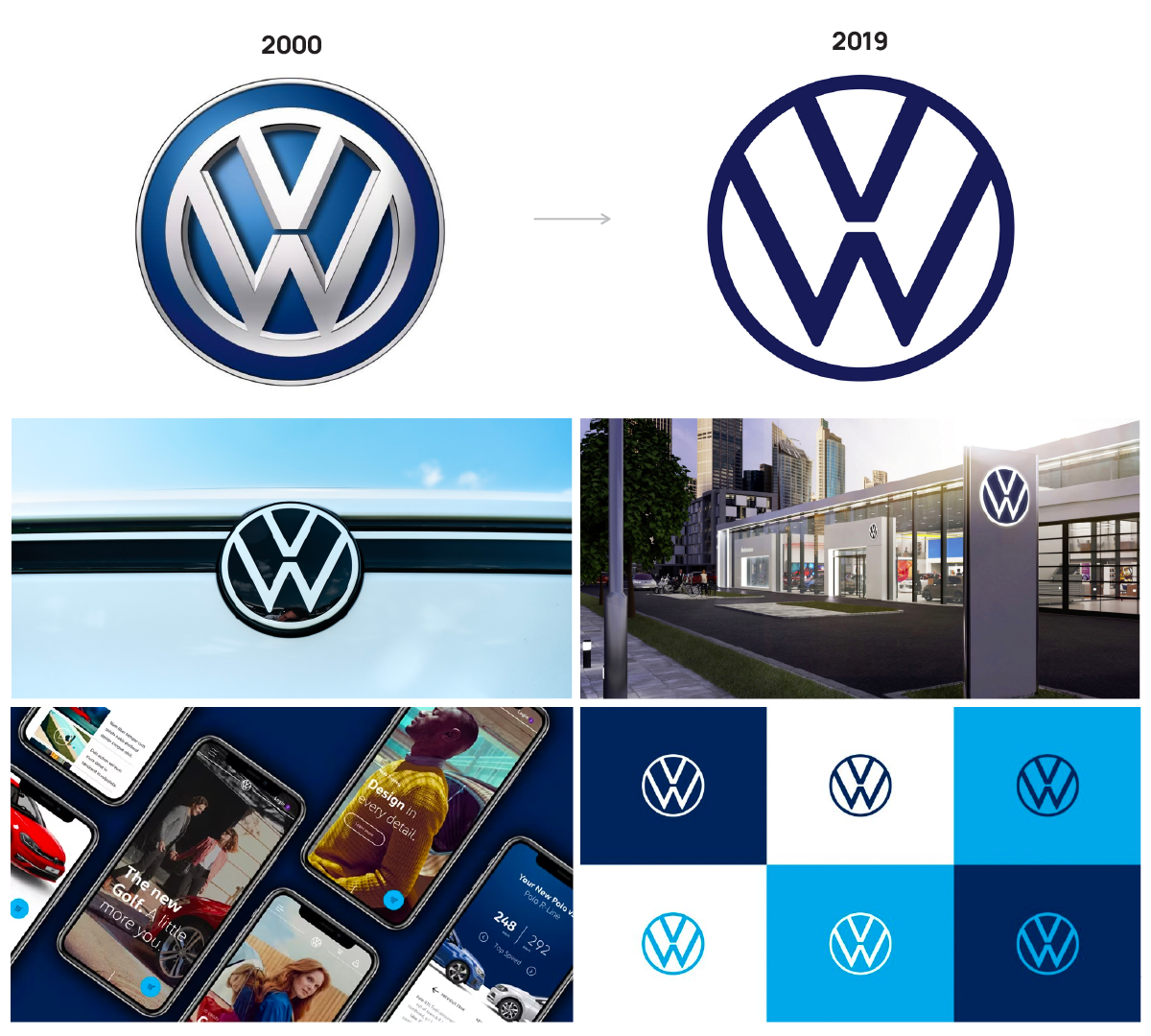
Rebrand vs Debrand
We recently explored what debranding is, and we know that these two phrases sound confusingly similar. However, they do have two different meanings. es, both refer to changing the visual and or verbal identity of your brand, and yes, some of the reasons to undergo these changes could be similar. But the actual changes you make are different. Let’s break it down in simple terms:
Rebranding is transforming, debranding is editing.
With a debrand, you keep the core essence and messaging of your brand the same, but you slightly update and tweak certain elements. Whereas a rebrand happens when you want to completely change the direction and perception of your brand. The changes tend to be more noticeable and dramatic. If you want to keep the foundations of your brand but you feel like it needs to be slightly updated, why not see if debranding is the way for you?
As you can see in the examples below, Google kept the core parts of their visual identity when refreshing their logo in 2015, they just swapped out their serif font for a sans serif one instead! This minor adjustment is why we would class this as a ‘debrand’. Whereas, when the trusty web hosting company GoDaddy decided to make some changes in 2020, they completely switched up their visual direction. They traded in their outdated, juvenile logo for a more slick, modern identity.
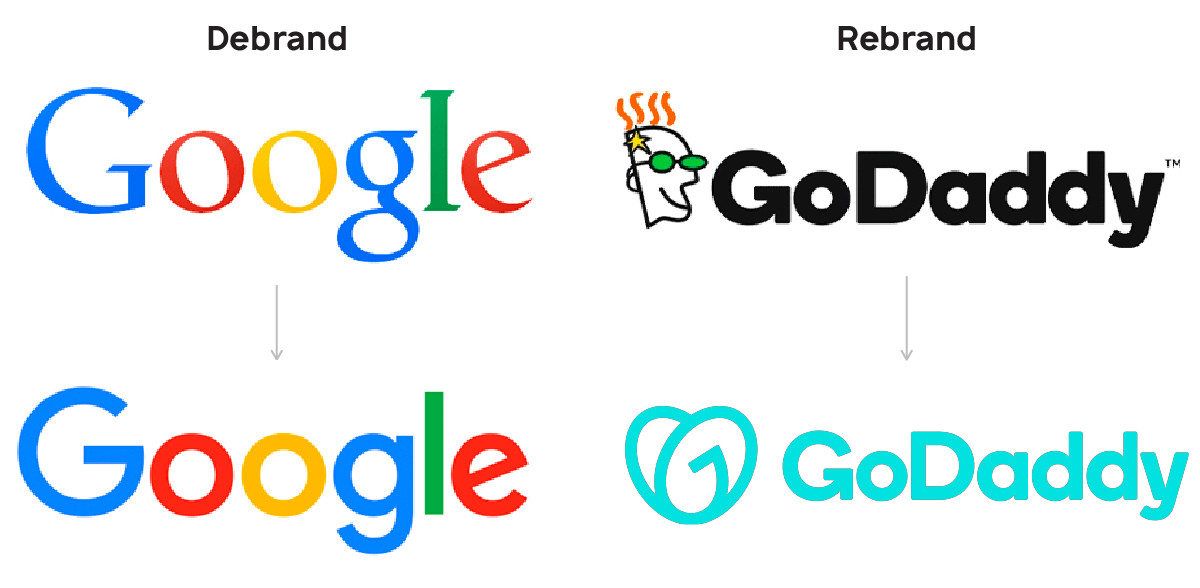
The Risks of Rebranding
There are so many reasons why you might consider rebranding (we’ll got onto those in a second!) but there is one important thing that you need to keep in mind; a rebrand should be done to suit your customer’s needs and marketplace opportunities, not just because you feel bored with your current aesthetic. Sometimes you just need to mix things up and give your brand a fresh lick of paint. That’s great! But unless you have the research to back that decision up, it could be a risk.
50% of people say that they are much more likely to use a company whose logo they easily recognise which means that a dramatic rebrand could cause you to lose trust and recognition from your loyal customers. If people can no longer recognise your brand, they will no longer reach for it and they may decide to switch to one that feels more familiar. That’s why it’s always best to get the professionals (like us) in for a branding decision such as redesigning. One wrong move and you could lose a lot of the community that you have built, and you certainly don’t want that!
As a business, you should always be putting the customers needs before your own, and that includes making decisions about how your brand looks and feels. If you try to make decisions that suit your personal needs and preferences, you won’t get very far in winning over new customers and maintaining the ones you already have!
Now that you’ve been warned by the risks, let’s explore some of the reasons you might want to take this leap!
Reasons to rebrand
Your brand vision and direction has changed
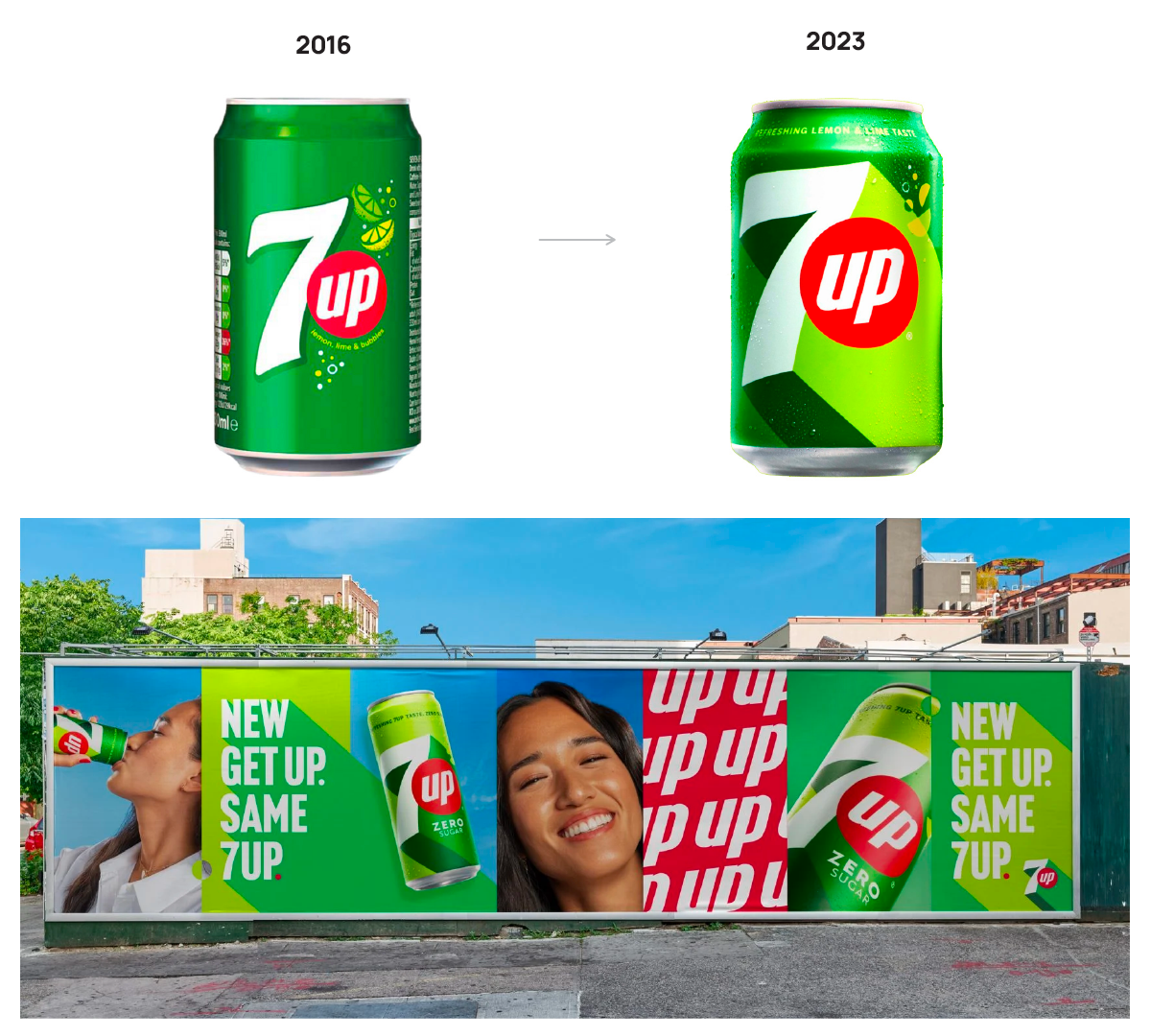
When 7-Up decided to rebrand in March 2023, their main aim was to represent their new brand positioning, “UPliftment”. The upwards motion of their typography and brand assets has helped them to promote the brand’s creation of moments of UPliftment.
Your target audience has changed
Changing your brand direction is sometimes considered because the people you’re trying to appeal to have changed. Not only that, but you might also be trying to appeal to a brand new audience that you haven’t been previously targeting. Whatever the changes, your brand should grab the attention of the people you are trying to target and a rebrand could be one way to make that happen.
Your brand identity has become outdated
Design trends come and go and it’s not always wise to hop on the first one you see. However, your customers will begin to get a feel when your identity becomes outdated. No matter what people say, unfortunately we all can be guilty of judging a book by its cover, and if they feel like your cover is dusty and old, they won’t pick up the book! Making sure your brand identity is fresh and up-to-date will draw customers and let them know that you’re the big cheese!
Tupperware underwent a major rebrand in 2007 after not touching their brand identity for 33 years! This is a prime example of an outdated brand that revisited their current position and decided it was time for a change. Their rebrand breathed new life into their identity and was able to take them into a new direction entirely!


You need to get ahead of the competition
If you’ve hit a slump and notice that your competitors are all doing something that you’re not (and it’s working for them), that might be a sign that you need to make some changes. Now we aren’t saying if they jump, you should too. But looking at what’s working for your competitors is a good indicator of the direction you should be going.
Your company has undergone a major change
Whether you’ve changed location, adapted your services or products, merged or acquired another business or undergone any other major changes, you need to make sure that your current identity reflects them.
Signs it’s Time to Rebrand
Still unsure whether this is the right move for you? Here are some simple, in your face and slightly confrontational signs that you may be ignoring that it’s time to take the leap.
It’s been 5-10 years since your last rebrand
Change is inevitable, and over the last few years it only seems to come around quicker. New technologies develop, the demands of the market change and ultimately, the priorities and needs of your consumer will shift. A brand can become dated and stagnant after 5-10 years which means if you haven’t made a change recently, you might want to evaluate.
You’re failing to differentiate yourself from the competition
If you look around you and you walk and talk exactly the same as your competitors, you could have a problem. How are you going to get noticed if you blend in? A rebrand can help you identify and redefine your key differentiators which can give you a competitive advantage.
You no longer want to show off your brand
You might not realise, but if you’re hesitating to show people your website, give out your business card or show off your brand in general, this might mean you’re embarrassed about it, which is a major red flag. If you aren’t proud, it will show, and that won’t attract customers in the slightest. Make sure your brand is something to shout about!
You have lost sight of your brand direction
This is particularly common for brands that have been up and running for quite a while and have a large team behind them. It’s easy to lose sight of your brand’s main objectives and direction when it isn’t the main focus anymore. If there is any confusion or lack of passion for where your brand is going and what it stands for, a rebrand is a great turning point to gain clarity for both the business and your consumers.
Wondering Where to Start?
Sometimes knowing when your brand should undergo surgery isn’t easy. Or sometimes, you know something needs to change but you don’t even know where to start. Luckily, our branding experts are pretty clued-up on the whole rebranding thing and are more than happy to discuss the next steps with you! Get in touch if you’d like to undergo a kick-ass rebrand with a kick-ass team!
And if you’re still not sure, why not check out some of the brand’s we’ve refreshed recently below?
